Spacecraft motion[]
Unlike a lot of space speculative fiction, Star Citizen will handle spacecraft motion according to Newtonian physics.
Other canons: spacecraft like aircraft[]
In a great deal of space science fiction, spacecraft, particularly starfighters, are shown moving as planes would, but a great deal of the way aircraft move is due to the presence of an atmosphere and the levels of gravity encountered that close to a stellar body. Specifically:
- Planes need to move forward relative to their orientation to maintain controlled lift and often to avoid dangerous structural stresses.
- Additionally, planes have a minimum speed that need to maintain to stay aloft, though their engine designs often mean they can't fly this slow without stalling anyway.
- Planes will slow down due to atmospheric drag unless sufficient forward thrust is provided to counter it.
- Planes can take advantage of atmospheric drag to maneuver by using control surfaces (rotating panels) on the wings (flaps and ailerons) and on the tail (rudder).
Realistic spacecraft motion[]
But space has no atmosphere, and spacecraft may be too far from a large body for gravity to be an issue. This has certain advantages and disadvantages:
- There is nothing interfering with a spacecraft's inertia in most of space.
- A spacecraft, therefore, does not need to apply any thrust to maintain its speed and heading.
- But it does need to apply thrust to make any changes to its speed and heading. It cannot use control surfaces like flaps or rudder to turn.
- There is no reason a spacecraft must fly forward according to its orientation, though the spacecraft's ability to fly reverse, sideways, or in other directions will be limited by its thruster layout and power.
- Without drag, structural stresses would come not from motion but from changes in motion.
Spacecraft motion in Star Citizen[]
In Star Citizen, most spacecraft have one or more powerful main engine thrusters that apply forward thrust for forward motion, and several retro and maneuvering thrusters to handle turns, slowing down, and stopping. It is not yet clear how easily pilots will be able to maneuver independently of the ship's orientation, but the thruster layouts of the ships would suggest this is entirely possible.
Fly-by-wire[]
Spacecraft use a "fly-by-wire" system to simplify a pilot's control of the ship. The pilot's input is sent to a computer which then queries the thrusters to determine how quickly a thruster can rotate into position and how much thrust it can apply. The computer then determines from this information the most efficient way to perform the maneuver the pilot is requesting and sends the appropriate commands to the thrusters. The physics engine of Star Citizen fully models this process, actually calculating how the thrust applied would affect the motion of a ship with given size, mass, and shape. This allows thruster damage, layout, and types to realistically determine the maneuverability of a ship.

